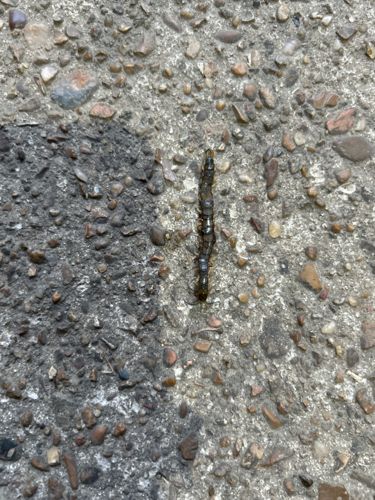Dobsonfly Larva
Scientific Name: Corydalus cornutus (for the Eastern Dobsonfly, a common species)
Order & Family: Order: Megaloptera, Family: Corydalidae
Size: Larvae can range from 2.5 cm to 9 cm (1 to 3.5 inches) or more in length. Adult dobsonflies can have a wingspan of up to 10-13 cm (4-5 inches).

Natural Habitat
Dobsonfly larvae, commonly known as hellgrammites, are found in well-oxygenated, unpolluted freshwater environments, particularly under rocks and debris in fast-flowing streams and rivers. Adults are typically found near these aquatic habitats.
Diet & Feeding
The larvae are carnivorous, feeding on aquatic invertebrates such as mayfly and caddisfly larvae, as well as small fish and tadpoles. Adults do not feed.
Behavior Patterns
Larvae are aquatic and predatory, spending most of their time in freshwater environments. They are active hunters, often lurking in wait for prey. Adult females are flightless and resemble larvae, while males are winged and short-lived. The larvae are known for their strong mandibles and ability to deliver a painful bite.
Risks & Benefits
Potential Risks: The larvae (hellgrammites) can deliver a painful bite with their strong mandibles if handled, though they are not venomous. Potential Benefits: They are excellent indicators of good water quality due to their sensitivity to pollution. They also play a role in the aquatic food web as predators and are a popular bait for fishing.
Identified on: 8/22/2025